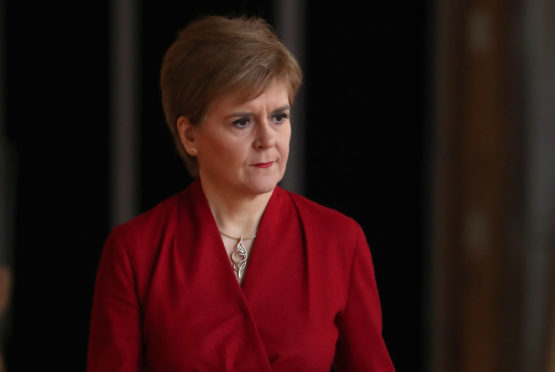
Nicola Sturgeon’s insistence that she received no written briefings in the first weeks of the coronavirus crisis is many things.
The First Minister’s claim that her chief medical officer and clinical director did not commit their guidance to paper or pixels as Covid-19 drew closer to our shores is certainly, as Labour suggest, unbelievable. It is possibly, as they also claim, deeply disturbing.
If, as the storms of Covid gathered above Scotland, Ms Sturgeon was really planning the protection of our country on the basis of a couple of chats in the Holyrood lift then it reveals a level of insouciance – or incompetence – that makes Boris Johnson look like a workaholic.
If there were really no written briefings landing in the First Minister’s inbox in those critical, pivotal weeks, then it is frankly alarming. If there were, but through communication channels not open to public scrutiny, it is something worse.
Of course, journalists will always believe there are compelling reasons for the public knowing why politicians do what they do. We will always agree with Supreme Court Justice Louis D Brandeis who suggested sunlight is the best disinfectant and electric light the most efficient policeman.
But when it comes to something as serious as our government’s response to Covid-19, the need to have it in writing, to properly detail who did what, why and when, could not be more important. It will be crucial for the inevitable inquiries, of course, but those investigations are not the main thing; that is what we can learn for the next time because there will be a next time and, terrifyingly, it could be worse than this.
Our government’s failure to be ready for Covid has been blamed on lessons not being learned from previous pandemic near misses. Given the weeks of horror, it is hard to believe that, one day, this too might be seen as a near-miss. Hard to believe but easily possible. To be properly prepared, we need to learn the lessons and, simply, they cannot be learned if they cannot be read.
Of course, the most immediate consequence of the First Minister’s insistence that her Covid briefings were verbal and not recorded is the impact on her reputation for straight-talking and plain-dealing. That is unfortunate at a time when her government, like all governments, needs all available credibility and authority.
Polls suggest Scots believe Ms Sturgeon is providing strong and effective leadership. That is, however, largely down to her own calibre as a politician and communicator while Boris Johnson’s shuffling, blustering performances have done her no harm either.
However, questions about care homes, PPE, testing, tracing and the now-notorious, but for too long secret, Nike conference in Edinburgh, continue to mount in Scotland.
It is, apparently, too much to hope but, perhaps, tomorrow’s historians, or even today’s journalists, will be able to find some written answers.

Enjoy the convenience of having The Sunday Post delivered as a digital ePaper straight to your smartphone, tablet or computer.
Subscribe for only £5.49 a month and enjoy all the benefits of the printed paper as a digital replica.
Subscribe